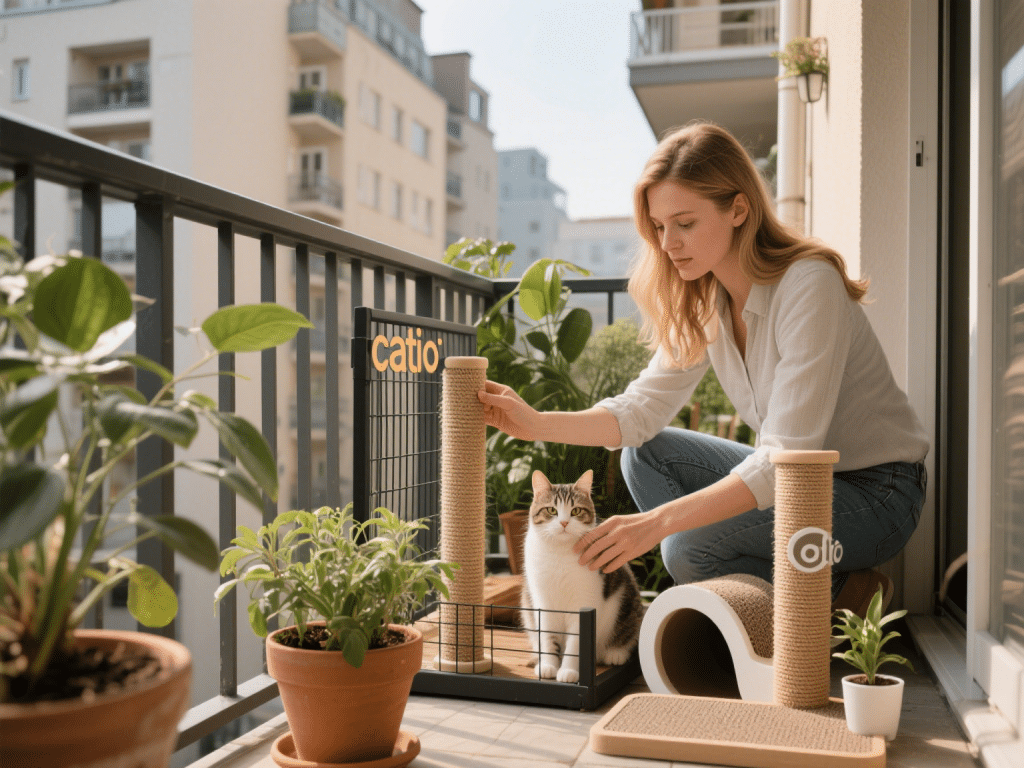
Introduction
Balconies offer fresh air and stimulation for indoor cats but also pose safety risks. Converting a balcony into a “catio” ensures your feline friend enjoys the outdoors securely. Follow these safety and enrichment tips to create an engaging balcony haven.
1. Securing the Balcony
Inspect Structure: Ensure railings, floors, and enclosure areas are sturdy and free of sharp edges.
Install Netting or Mesh: Use heavy-duty, UV-resistant cat netting or hardware cloth (½-inch mesh) around railings and openings. Secure tightly with zip ties or hooks rated for outdoor use.
Seal Potential Escape Routes: Check gaps under railings or between panels; seal any spaces larger than 2 inches to prevent slipping.
2. Comfortable Layout & Shelter
Shaded Area: Provide a sheltered nook with a weatherproof canopy or enclosed box to protect from sun and rain.
Multi-Level Platforms: Install cat shelves, steps, or ramps to encourage climbing. Position at varying heights to satisfy natural climbing instincts.
Stable Furniture: Use sturdy, weather-resistant furniture or specially designed cat trees; avoid lightweight pieces that may topple.
3. Enrichment Features
Scratching Posts & Pads: Attach sisal-covered posts or horizontal scratchers near high-traffic areas for claw maintenance.
Interactive Toys: Hang feather wands or small bells just out of reach to encourage jumping and swiping.
Visual Stimulation: Position bird feeders or small plants outside the netting to attract birds and insects, providing entertainment for your cat.
Perching Spots: Add a hammock or cushioned bed attached to the railing so your cat can lounge comfortably while observing surroundings.
4. Safe Plant Selections
Non-Toxic Plants: Choose cat-safe species like catnip, cat grass, spider plants, and pothos.
Avoid Toxic Varieties: Do not include lilies, azaleas, oleander, or sago palm. Reference the ASPCA’s list of toxic plants.
Potted Herbs: Grow basil, mint, and parsley in small pots for sensory enrichment and safe nibbling.
5. Flooring & Hygiene
Outdoor Rugs & Mats: Use washable, non-slip outdoor rugs to cushion paws and provide traction.
Litter Box Integration: If space allows, place a compact, covered litter box in a discreet corner; line with low-dust litter.
Routine Cleaning: Sweep or vacuum netting and flooring weekly to remove debris, pollen, and potential parasites.
6. Supervision & Monitoring
Initial Supervised Visits: Accompany your cat during early balcony sessions to monitor comfort and respond to signs of stress (excessive meowing, crouching).
Weather Considerations: Limit balcony time during extreme heat, cold, or heavy rain. Provide water and shaded zones to prevent overheating.
Harness Training: Use a cat harness and leash for balcony training to prevent sudden dashes if a bird appears.
7. Budget-Friendly Catio Ideas
DIY Pallet Furniture: Repurpose wooden pallets to create platforms or benches; sand and seal edges for safety.
Affordable Netting Solutions: Purchase roll netting from garden centers; self-installation saves on professional costs.
Upcycled Toys: Craft dangling toys from scrap fabric or cardboard tubes filled with crinkled paper.
Conclusion
A well-designed, cat-friendly balcony (catio) offers indoor cats enriching outdoor experiences safely. By securing railings, providing multi-level perches, incorporating safe plants, and supervising initial visits, you create a stimulating environment that satisfies curiosity while ensuring protection. Regular cleaning and weather-appropriate adjustments keep your balcony cat oasis enjoyable year-round.









Comments on "Creating a Cat-Friendly Balcony: Safety and Enrichment Tips" :